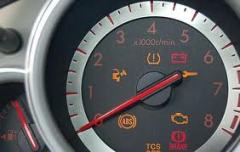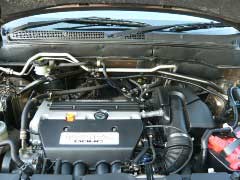Basic Knowledge About Warning Light on the Dashboard - Vol.35
Sometimes the light on your dashboard that flicks on may be an indication that you need to pull over right now; other times, it may only mean that you need to start thinking about taking your car into the shop, but you have plenty of time to do so. The different warning lights on the dashboard mean different things, so it is always a good idea to know just what those flashing lights are indicating. You can usually find this information in your car's owner's manual.
The critical lights that will show up on your dashboard are the ABS or antilock braking system, the oil light, and the brake light. If you see a red light for the brake light, ensure that you are not driving with your hand brake on and check the brake fluid level. If it is low, you need to get your car in as soon as possible to check the brakes and make sure everything is okay. You definitely don't want to be driving with the brake light on.

If you have antilock braking problems, call a tow truck or get to the nearest mechanic as soon as you possibly can. The same goes for the oil light; this light means there is no oil pressure, or that the engine may be very low on oil. In this case, you should pull over and immediately shut off your car, then add oil if it is low. If the light is still on even if you have added oil, this might mean there is a bad oil pump that needs to be replaced as soon as you can. Take the car into the shop right away and don't hesitate or waste time on this matter.
Now there are also some lights that aren't as drastic. For example, you might see the check engine light, which is commonly misconstrued as a serious problem. In reality it is not necessarily the mark of death for your car, but rather an indicator that your car knows something is wrong and you need to make an appointment to have it checked out. It is okay to drive with this light on, but the car's computer might shut down to a lower power mode and then you won't be able to wait before taking it to the shop.
You might also see a battery charge light come on at some point. This is a sign that you need to replace your car's battery very soon. Turn off anything you don't need like electrical devices - the radio or heat for example - and don't start the engine more than you need to. The battery charge light is a sign that you should get your car in quickly to avoid getting stranded somewhere. The battery is what keeps the car moving, after all, so it does need to have this function to work properly.

These are some of the basic elements every car owner should know about warning lights on the dashboard of a car. Sometimes they may be critical; other times, they might just indicate that is going to be time to make an appointment soon, but not necessarily right away. If you ever have a warning light that you don't know the meaning of, you can always consult the owner's manual, which should be kept in your car's glove compartment so you can have it handy at all times. By having the owner's manual with you, any time something goes wrong with your car, you'll have a quick reference that can help you troubleshoot and solve the problems as soon as possible, so you can start driving normally again.